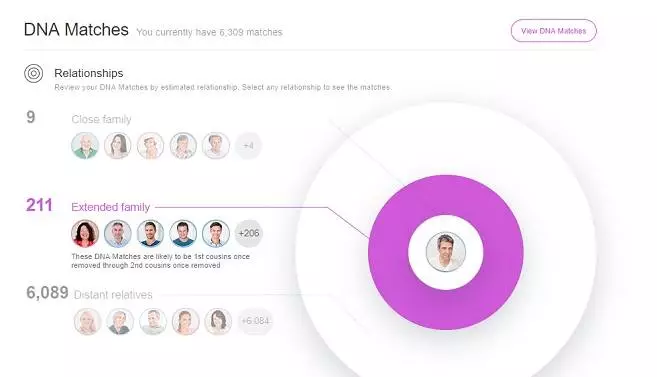
You can find the Shared DNA Matches right before the family tree (Pedigree Charts) section of the DNA match profile: The red arrow points to the Shared DNA Matches section of the profileĪll of the people who are in the Shared DNA Matches list share DNA with both you and your DNA match. This is especially true if you have close relatives who have also tested with My Heritage. This will often help you figure out on which side of your family you should look to find your connection. If you check your shared DNA matches, you will be able to see which matches you share in common with your DNA match. If only there was some way to narrow down the options a bit and eliminate some lines of your family tree as places to look for a connection. The further back you go in someone’s family tree, you might notice that the number of ancestors grows quickly. If there is no family tree attached to your DNA match’s profile, then you might want to read my post: “ How is your DNA match related? Here’s a Checklist.” Other DNA matches shared in common This is where you will find your match’s family tree, if they have built one on My Heritage. If you scroll about 2/3 down the page, you will find a section called “Pedigree Charts”. On My Heritage, you can access several generations of your DNA match’s family tree right from the match profile page. Family tree informationĪs you now know, the amount of shared DNA can give you an idea about where you should look in your tree (and your match’s tree) for a common ancestor.Īppropriately, this is the next element of your DNA match list that you should check.

In addition, it’s important to know that with segments this small, the common ancestor could be further than eight generations back. It is unlikely that the common ancestor is more recent than great-great grandparent. In fact, I would call it a small segment.

The DNA match that I showed as an example above shares only 12.3 cMs, which is barely in the medium category. While there is no hard and fast rule about DNA segment sizes, you can use the following as a general guide: How do you know what a large segment is? And how small is a small segment? Those DNA matches who share very small segments could be very distantly related. This means that people who share very large segments with us are likely relatively close relatives. We inherit large pieces of DNA from our parents, and over the generations, DNA segments get broken-up. This is especially important if you don’t already know how you are related to your DNA match. The next important piece of information is the size of the largest DNA segment. The number of shared centimorgans can help us estimate our relationship to our DNA matches. The red arrow points to the total shared DNA, which in this case is 12.3 centimorgans (cMs) These individuals share 12.3 cMs ( centimorgans) of DNA. You can see this information directly from your main match list, or when you click on your match’s name to view more about the connection.īelow, you can see an example of a DNA match from My Heritage. One of the most important things we should look for when we examine a match on My Heritage is the total amount of shared DNA. As time permits, you can work down your list learning about your more distant relatives. I would recommend starting at the top of your DNA match list with your closest DNA matches. There are five main aspects of your DNA match list that I recommend you investigate each time you examine a DNA match: total shared DNA, size of largest segment, family tree information, shared matches, and shared ethnicity regions.īelow, I will explain more about each element and what you can learn by working through your matches in a methodical manner. Five things you should look for in every DNA matchįortunately, My Heritage has made it super easy for you to navigate through your DNA match list to learn more about your connection with your matches. In order to learn all you can from your DNA matches, there are important aspects of your connection with each match that you should examine.

If you are interested in genealogy, you should not overlook your DNA match list. In fact, your DNA matches can be a useful tool for family tree research. You can discover new living relatives, learn about new ancestors, and uncover important details about your family tree. Your My Heritage DNA match list is filled with valuable information. What can you learn from My Heritage DNA matches?


 0 kommentar(er)
0 kommentar(er)
